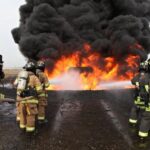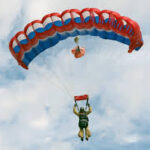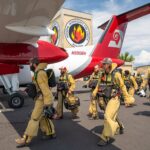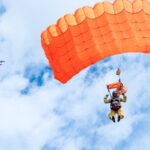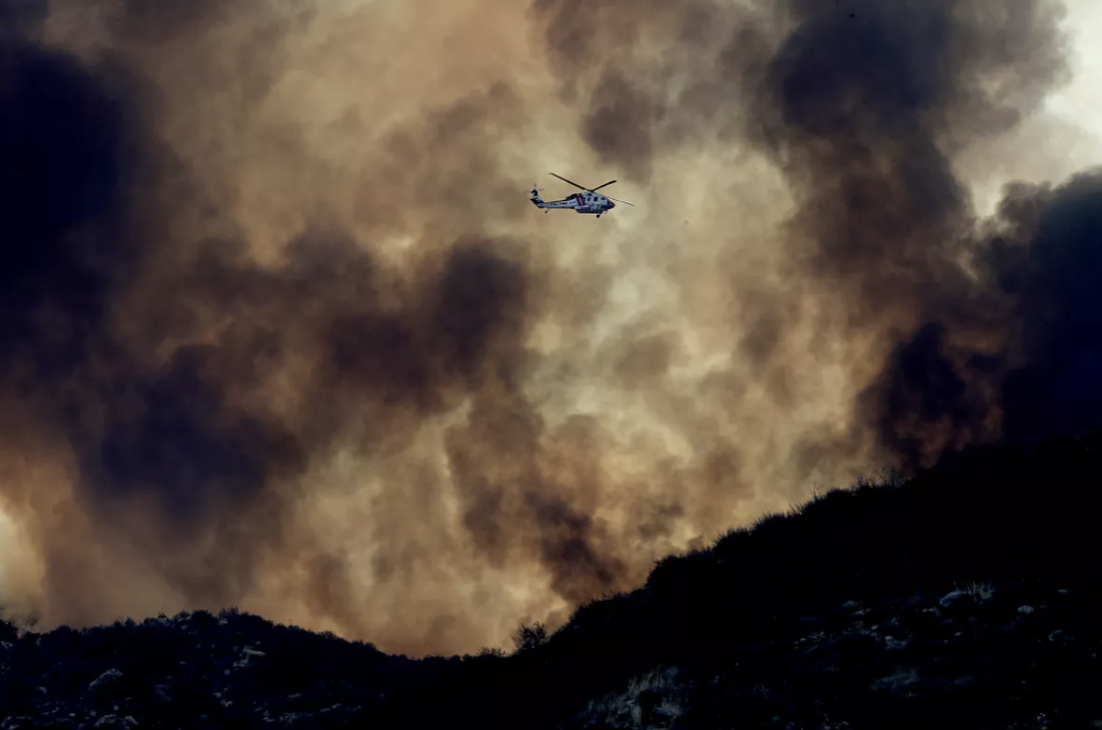
PUBLISHED SEPT. 10, 2022 UPDATED SEPT. 11, 2022 6:08 PM PT
Hemet-Ryan Airport was buzzing with activity Saturday morning as Cal Fire pilots readied to begin another long day battling the deadly Fairview fire a few miles away.
Pilots worked out to blaring heavy metal in an outdoor gym near the tarmac, swinging kettlebells and pounding out pushups in the unseasonably cool weather brought overnight by the remnants of Tropical Storm Kay.
With the Alabama-Texas football game playing on a big screen at one end of the low-slung mess hall, cooks prepared long trays of bacon-wrapped meatloaf for lunch as the last of the morning’s sausage and eggs was put away.
It was a rare moment of downtime for Chris Renner, a forestry fire pilot for the Aviation Management Unit of the California Department of Forestry and Fire Protection. The 40-year-old spent Wednesday and Thursday nights in the cockpit of a “Cal Hawk” — a Cal Fire-modified Blackhawk helicopter — picking up 1,000 gallons of water at a time from Diamond Valley Lake and releasing it from about 150 feet above the Fairview fire.
“The first night there was some really intense fire activity — 50-foot fire whorls,” he said. “We were trying to hit the hot spots, slow it down as much as we could. We didn’t want the fire to burn over the ground crews’ containment lines.”
Such water drops are a key function of any aerial firefighting operation. But the Fairview fire is one of the first handful in which Cal Fire has deployed specially trained pilots like Renner to fly at night using night-vision goggles, joining other fire departments, like Los Angeles’, that have been fighting blazes from the skies in the dark for years.
The approach allows for water and retardant drops while pilots track fires from above, which provides vital information about fire movement and activity to firefighters on the ground.
“The ability to fly at night has really increased the capability of firefighters working night shift” on the ground, Marc Peebles, a public information officer for the U.S. Forest Service, said. “So just like you see during the day, with all the spectacular water and retardant drops, they’re able to do that at night.”
The primary role of aircraft is not to put out fires but to support ground crews, said Chance Inwood, air operations branch director for Cal Fire Team 6.
Still, the night runs played a key role in suppressing the Fairview fire and coordinating resources, as when they helped keep a cluster of homes and other structures near Hemet from burning, Renner said.
“One of the houses had some bushes burning in its yard. And we — between us and other aircraft — did about four drops of water on their property,” he said. “But we weren’t able to put it out, so we got ahold of a nearby engine over the radio and they went over and were able to put it out.”
Peebles, who was working from a trailer at the Fairview fire’s incident command Saturday morning, said flying in the dark with night-vision goggles is “very, very dangerous” and only done by specially trained pilots. Still, air drops have been a key tool in the comprehensive approach to fighting the fire.
“This is a full-suppression fire. That means we go after it with everything we’ve got. We’re going to be here days, maybe weeks,” he said.

Cal Fire reported Sunday afternoon that the fire had spread to roughly 28,300 acres and was about 45 % contained. Two people were killed and at least one person was taken to the hospital with injuries, he said, adding that the injured victim is expected to survive. Thirteen buildings have been destroyed, with another four sustaining damage, he said.
He said fire officials expect the blaze to be fully extinguished by Monday. Nearly 1,200 firefighters have been deployed to the area.
READ MORE AT: https://www.latimes.com/california/story/2022-09-10/firefighters-battle-massive-fire-near-hemet-from-the-sky-at-night


